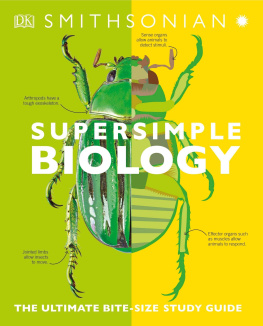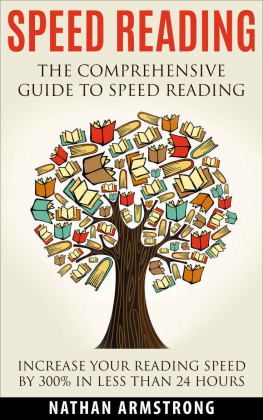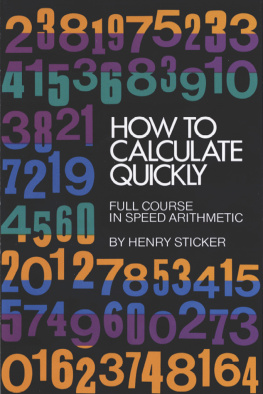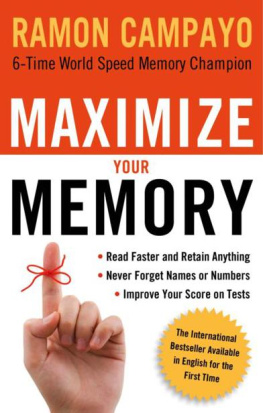
Table of Contents
THE MANUAL
Introduction
Instructions
Part 1-Concentration
Aims
Why concentrate?
Scientific Evidence
Levels of the mind
Benefits
of
meditation
or
concentration training
Techniques
Technique 1- Mantras
Technique 2- Letters
Technique 3- Breathing
Technique 4- Countdown
Technique 5- 3D objects
Technique 6- Smel
Technique 7- Touch
Technique 8- Relaxing scene
Technique 9- Background Sound
Training plan
Summary and Mind Map
Part 2- Memory
Aims
Importance of memory
Photographic vs. Eidetic memory
Recorded feats of memory
Scientific evidence
General concepts
Visualising words
Visualising numbers and symbols
Adding dimensions
The importance of repetition/review
Being systematic and enforcing order
Systems
Link system
Peg system
Loci system
The grid system
Applications
Foreign Vocabulary
Non-Foreign Vocabulary
Spel ing
Telephone numbers
Cards
Binary code
Computer code
Mathematical formulae
Chemistry notations
Names and faces
Presidents and Rulers
Calendar
Oenophiles
Other- extensions
Other- building your system
Training plan
Summary and mind map
Part 3- Speed Reading
Aims
Introduction
Scientific Evidence
Technique
Concentration
Regressions
Fixations
Layered reading
Subconscious reading (optional)
Varying reading speeds
Training plan
Exercise 1- Speed and comprehension
Exercise 2- Speed
Exercise 3- Peripheral vision and sub
vocalisation exercise
Exercise 4- fixation training
Training schedule
Incorporating speed reading into daily life
- crucial
Summary and Mind Map
Part 4- Ultimate Study Method
Aims
The Ultimate Study Method (USM)
Key concepts
Concentration
Mind Map
Linear Notes
Unique identifiers
Speed reading
Memorising
Reinforce
Overal
Summary and Mind Map
Part 5- Rapid math
Aims
Mental arithmetic
World Records
Scientific Evidence
Techniques
Addition
Multiplication
Main multiplication method
Squaring
Subtraction
Division
Cube root
Higher roots
Square root
Decimals
Training plan
Summary and mind map
Afterword
Contact
Reference and Extra reading
Concentration
Memory
Speed Reading
Mind mapping
Rapid Arithmetic
Index
THE MANUAL
A guide to the Ultimate Study Method (USM)
By Rod Bremer
Copyright 2011 by Rod Bremer
This work is subject to copyright. Al rights are reserved. No part of this book may be reproduced, duplicated or utilised in any way, form or by any means, electronic or mechanical, without permission in writing from the author. This includes, but is not limited to, photocopying, scanning, recording, re-use of ilustrations and broadcasting. Inquiries should be addressed to: theUSMmanual@gmail.com
Disclaimer
This book is not intended to replace the services of a trained health professional. Al matters and circumstances regarding your health require medical supervision and attention. You are responsible for consulting your physician before adopting the procedures and techniques presented in this book. Any applications of the ideas, techniques and procedures set in this book are at the readers discretion.
The author and publisher of this material are not responsible in any way whatsoever for any liability, loss, injury or risk, personal or otherwise, which may occur, directly or indirectly, due to reading or
folowing the instructions in this manual.
To my family
Introduction
There is a profusion of books written about topics related to faster forms of learning and techniques for greater utilisation of the mind; as with everything in life, some are good whilst others make grandiose promises that fail to materialise. The aim of this manual is to provide the reader with the best techniques that achieve the desired goal with the least effort in the shortest time. The approach taken here is unique; the techniques provided are combined into a learning system whose main goal is the practical implementation of thousands of years of research into the human psyche.
The study system presented here is the culmination of the authors 25 years of experimentation with al the latest research, scientific and anecdotal, on the topics of super memory, speed reading, concentration, states of mind, rapid arithmetic and note taking. The author has kept the techniques that work, modified those that were not practical and discarded those that did not provide measurable results. The end outcome is a system that would alow the reader, if he chooses to persevere with the training schedule, to master an approach that would ensure a life time of enjoyable learning experience as opposed to the drudgery of rote learning and cramming. In addition, the ability to perform monumental feats of mind (like memorising a pack of cards in 2 minutes or finding the cube root of 912,673 in 4 seconds) would make one realise how limited our experience of life has been before and how these and other limits we set ourselves are just an ilusion that can easily be dispeled.
The manual has been written in the order in which it should be read; the reader is strongly advised to folow the books instructions since earlier techniques are used in later ones. For example, in order to multiply 7615234 x 9854787 one needs to be able to memorise the result, which is a 14 digit number; without having learnt the memory techniques presented in part 2 it would be impossible to perform the calculation.
Contrary to other wel marketed products out there, the author chooses not to make extravagant claims of abilities such as: to be able to read a book in mere minutes or to memorise something once and forever retain it. Instead the exposition of this manual provides
the reader with the techniques that work and the training schedule that needs to be undertaken in order to see measurable progress.
We provide documented and verified feats achieved by other humans to alow you to perceive what is possible with perseverance and dedication. The important point here is that your motivation should determine how much you time invest, for example, if you never intend to compete in the memory championships or to play professional poker then card memorisation should not be high on your training agenda. The training schedule provided here is merely to alow mastery of the technique whilst providing a wide variation to enrich the experience and to show you what is possible. For specific goals you may wish to tailor the approach, but the information provided wil be sufficient for you to do so.
The manual is self contained and extra reading on the topics is not necessary for mastery. The reference section provides a list of resources that were relied upon for completion of the work; however, some sections are purely the fruit of the authors work and innovation, and thus have no references elsewhere. The interested reader may wish to explore the references but to emphasise the point, it should be noted that for practical use of the techniques extra reading is not necessary.
Next page
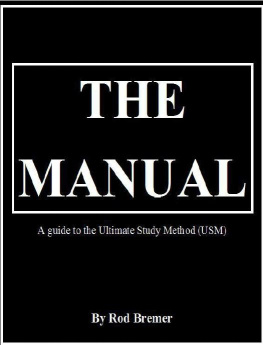


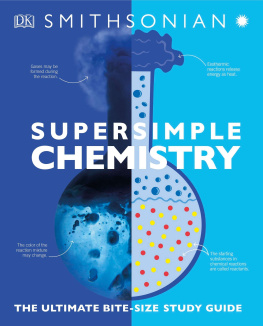
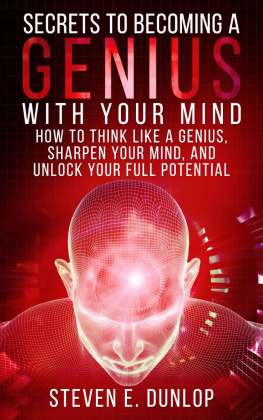
![David L Nelson - The Absolute, Ultimate Guide to Principles of Biochemistry [Study Guide and Solutions Manual]](/uploads/posts/book/288595/thumbs/david-l-nelson-the-absolute-ultimate-guide-to.jpg)
